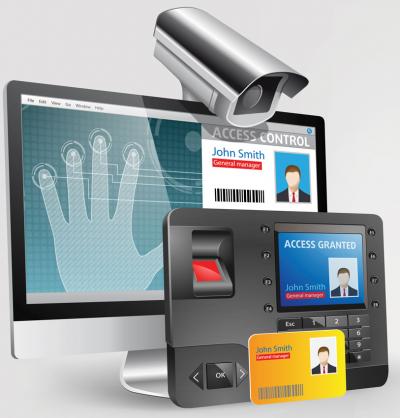The Green Sheet Online Edition
July 28, 2025 • 25:07:02
When visual checks fail: Why retailers need POS-integrated ID scanners

Age verification at the point of sale (POS) has become significantly more complex. What merchants once handled with a quick visual check of an identification card now requires more sophisticated approaches as fake IDs become harder to detect. For businesses processing age-restricted transactions, this shift presents operational challenges and compliance risks that demand attention.
Fake IDs reach new levels of quality
Today's fake IDs feature authentic-looking holograms, realistic textures and high-quality photography that can deceive even experienced staff. Many of these counterfeits originate from overseas operations that utilize advanced printing techniques and professional-grade materials, making visual detection extremely challenging.
This improvement in counterfeit quality creates substantial vulnerability for merchants selling age-restricted products. Relying on employee judgment for document verification places enormous pressure on front-line staff while exposing businesses to regulatory violations and financial penalties.
Outdated POS systems offer limited protection
Most POS systems provide basic age verification prompts: simple reminders that appear when age-restricted items are scanned. While these prompts prevent forgotten ID checks, they depend entirely on manual verification processes. Employees must examine documents, calculate customer ages and make subjective decisions about authenticity.
This manual approach creates multiple operational problems. Transaction times increase as employees perform calculations and inspections. Customer interactions can become confrontational when IDs are questioned. Most importantly, the verification process remains vulnerable to human error and sophisticated forgeries.
ID scanners provides data-based verification
Advanced ID scanning technology shifts verification from subjective visual inspection to objective data analysis. The POS integrated ID scanner reads the secure 2D barcodes on state-issued identification documents, which contain encrypted information encoded by the issuing authorities, such as state Department of Motor Vehicles.
When an ID is scanned, the system instantly reads this secure data, compares the birthdate against current requirements, and provides immediate approval or denial. The verification process moves from employee judgment to automated data processing, removing subjectivity and human error from the equation.
#h2Key advantages of ID scanner The primary advantage of using an ID scanner include:
- Speed and efficiency: Digital scans complete in under one second, compared to the extended time required for manual verification and age calculation.
- Accuracy: Automated systems eliminate calculation errors and remove the guesswork from age verification decisions.
- Fraud detection: While physical ID features can be expertly replicated, the digital information within barcodes is far more challenging to forge correctly. Systems can detect formatting errors and data inconsistencies invisible to human inspection.
- Compliance support: Many jurisdictions require businesses to record customer birthdates for certain age-restricted purchases. Automated scanning captures, verifies and logs this information simultaneously, ensuring compliance with local regulations.
- Reduced confrontation: Professional, impartial results from digital verification reduce customer disputes and employee stress during ID checks.
Addressing modern security challenges
The quality of counterfeit identification has reached a point where visual inspection alone cannot provide adequate protection. Businesses that continue to rely on manual verification face increasing exposure to:
- Regulatory violations and associated penalties
- Loss of licenses for age-restricted product sales
- Legal liability from underage sales incidents
- Operational inefficiencies and customer service issues
Implementation considerations
Digital ID scanning represents a practical response to current verification challenges. The technology integrates with existing POS systems and requires minimal staff training. For merchants processing significant volumes of age-restricted transactions, investing in scanning capability offers measurable returns through improved compliance, reduced liability and increased operational efficiency.
As counterfeit identification continues to improve, businesses must evaluate whether their current verification methods provide adequate protection. The gap between visual inspection capabilities and modern forgery techniques will likely continue widening, making digital verification increasingly necessary for effective age verification programs.
The business case for upgrading
Merchants face a straightforward decision: continue depending on manual processes that become less reliable each year, or implement technology designed to address current verification challenges. Digital ID scanning provides a direct solution to the challenges posed by sophisticated counterfeits, while supporting compliance obligations and enhancing operational efficiency.
The technology exists to solve these verification challenges. The question for merchants is whether to adopt these solutions proactively or wait until current methods fail to meet their business needs. 
Elie Y. Katz is founder, president and CEO at National Retail Solutions (NRS), https://nrsplus.com. Contact him by phone at 201-715-5179 or by email at ekatz@nrsplus.com.
Notice to readers: These are archived articles. Contact information, links and other details may be out of date. We regret any inconvenience.





